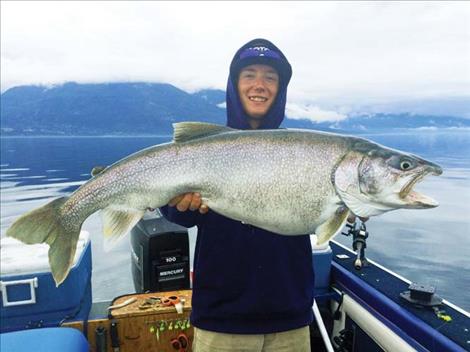Hunting and Fishing
Lake trout fishing gives native species a chance to recover
Hey savvy news reader! Thanks for choosing local.
You are now reading
1 of 3 free articles.
With fall, swimmers disappear from the increasingly frigid waters of Flathead Lake, and anglers, bundled up on boats or casting from shore, begin to hunt for wily mackinaw or lake trout.
It’s a sport that’s not only sanctioned, but actively encouraged by the Confederated Salish and Kootenai Tribes, who manage the south end of the lake.
The non-native lake trout were initially introduced to the lake, along with kokanee salmon, as a food source. And for a while at least, they were decent enough neighbors. But when another newcomer, Mysis shrimp, was planted in the Flathead basin by Montana Fish Wildlife and Parks staff in the 1980s in hopes of benefitting the kokanee, Flathead Lake’s fishery was thrown completely off balance.
Voracious young lake trout, whose population was curbed by their tendency to snack on each other, began to feast on the shrimp that were suddenly raining down upon them. As their population ballooned, they started to devour kokanee, who were simultaneously forced to compete with shrimp for their food source: zooplankton.
It was a perfect storm for the kokanee fishery, which collapsed in 1987. “It was like flipping a switch,” says tribal fisheries manager Les Evarts.
The lake trout then turned to other species to eat, including the native cutthroat and bull trout, which began to decline in the 1980s.
In 2002, the Tribes introduced Mack Days, a biannual fishing derby that aims to curb the population of mackinaw and give native species an opportunity to recover. The spring and fall fishing derby (continuing now through Nov. 15) has helped, but not enough.
“We grew it and grew it, but couldn’t get any more growth out of the harvest, which wasn’t helping us achieve native species conservation,” says Evarts.
In 2014, after completing an Environmental Impact Statement, the Tribes added gillnetting to its lake trout management arsenal. The aim is to curb the estimated 1.5 million lake trout by 75%, which requires a harvest of 143,000 annually. “Our model tells us that multiple years at that level would significantly reduce the population,” says Evarts.
It was a somewhat controversial move. Some worried that by netting lake trout, the population of other species, especially bull trout, might diminish.


















